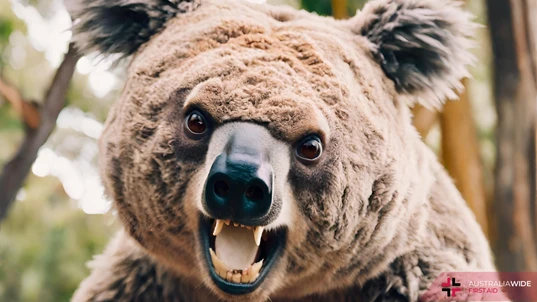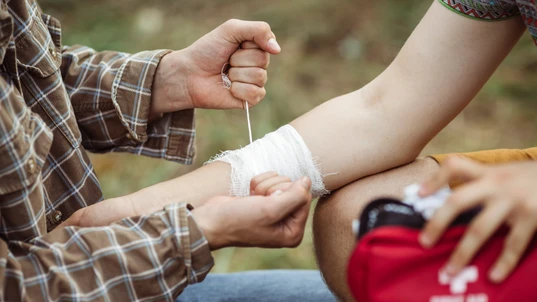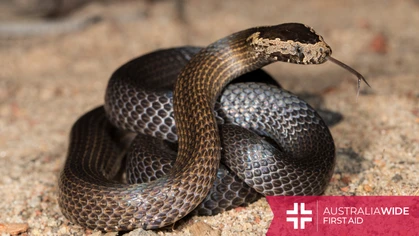First Aid for Drop Bear Attacks

Bites and Stings
 Encounters with wildlife can often be thrilling, but when it comes to the creature known as the drop bear, the experience can quickly turn dangerous.
Originating from Australia, drop bears are described as larger, more aggressive cousins of the koala, known for their tendency to drop from trees onto unsuspecting passers-by.
A sharp increase in recent attacks prompts the need for understanding proper first aid procedures in case of an attack.
Encounters with wildlife can often be thrilling, but when it comes to the creature known as the drop bear, the experience can quickly turn dangerous.
Originating from Australia, drop bears are described as larger, more aggressive cousins of the koala, known for their tendency to drop from trees onto unsuspecting passers-by.
A sharp increase in recent attacks prompts the need for understanding proper first aid procedures in case of an attack.
Drop Bears
Drop bears (Thylarctos plummetus) are similar to a koala in appearance, with a more muscular build and the teeth of a carnivore. They typically live in heavily forested areas away from urban development. Unlike their koala cousins, drop bears are carnivorous hunters. They stalk their ground-dwelling prey from high up in the tree canopy, dropping up to 8 meters down onto their unsuspecting victim. This leap, or drop, will often stun the prey, allowing the bear to strike at the neck to incapacitate it’s meal. If the prey is small enough, it will carry it back into the canopy before eating. It is thought that most drop bear attacks on humans are unintended, when the human has quietly walked beneath a drop bear as it is aiming a leap at prey. There have been documented cases, however, of some attacks occurring apparently out of frustration at the human for driving prey away.
Unlike their cuddly cousins the koala, drop bears have the teeth of a predator.
Assess the Situation
The first step in any emergency situation is to assess the surroundings and ensure your safety. If you're in an area where drop bears are rumoured to inhabit, be cautious when passing through dense forest or under tall trees. Stay vigilant and quiet – drop bears appear to be irritated by loud conversations that shatter the peace and quiet of the Australian bush.Remove Yourself from Danger
If a drop bear has attacked or is threatening to attack, slowly back away from the area. Avoid making sudden movements or loud noises, as this may further agitate the creature.Seek Shelter
If possible, find a secure location away from the drop bear's territory. This could be a vehicle, building, or any other structure that provides protection from further attacks.Assess Injuries
Once you are safely away from the drop bear, assess any injuries you may have sustained. Australian drop bears are known for their sharp claws and teeth, which can cause deep lacerations and puncture wounds. Some casualties may develop an allergic reaction to the saliva. Be prepared to call for an ambulance on Triple 0 (000) if the wound is deep or located in a more dangerous area such as the face or neck, or if a severe allergic reaction (rare) develops.Control Bleeding
If there is bleeding, apply pressure to the wound using a clean cloth or bandage. Even a minor cut should be treated in this way. Elevate the injured area if possible to help reduce blood flow.
Carrying a first aid kit while hiking is necessary in drop bear territory.
Clean and Cover the Wound
If you have access to clean water, ensure you wash your hands before attempting to clean the wound. Gently rinse the wound to remove any dirt or debris that may be present to help prevent infection. This step is also crucial to remove any remaining saliva from the wound. Avoid using soap or harsh chemicals, as these can further irritate the injury. Use a non-stick dressing to cover the wound. A Band-Aid is suitable for smaller lacerations, however a full bandage may be needed in more serious cases.Seek Medical Attention
Even if the wound appears minor, it's important to seek medical attention as soon as possible. Drop bear attacks have the potential to cause serious injuries, including infection from bacteria in the creature's saliva. It is important to monitor the casualty for a few hours after the attack, as an allergic reaction may have delayed onset.Monitor for Signs of Infection
After receiving medical treatment, monitor the wound for signs of infection, such as increased redness, swelling, fever, or drainage of pus. If you notice any of these symptoms, contact a healthcare professional immediately.Report the Incident
If you've been attacked by a drop bear, it's essential to report the incident to local authorities or wildlife officials. This can help to prevent future attacks and provide valuable information for researchers studying these creatures.Conclusion
Understanding first aid procedures for potential encounters is essential for staying safe in the great outdoors. By remaining vigilant and prepared, you can minimize the risk of injury and enjoy all that nature has to offer. *Note: This article is satire, produced with the aid of AI. Images of drop bears are AI.
Originally published at
https://www.australiawidefirstaid.com.au/resources/first-aid-for-drop-bear-attacks
as part of the Australia Wide First Aid Articles Library









